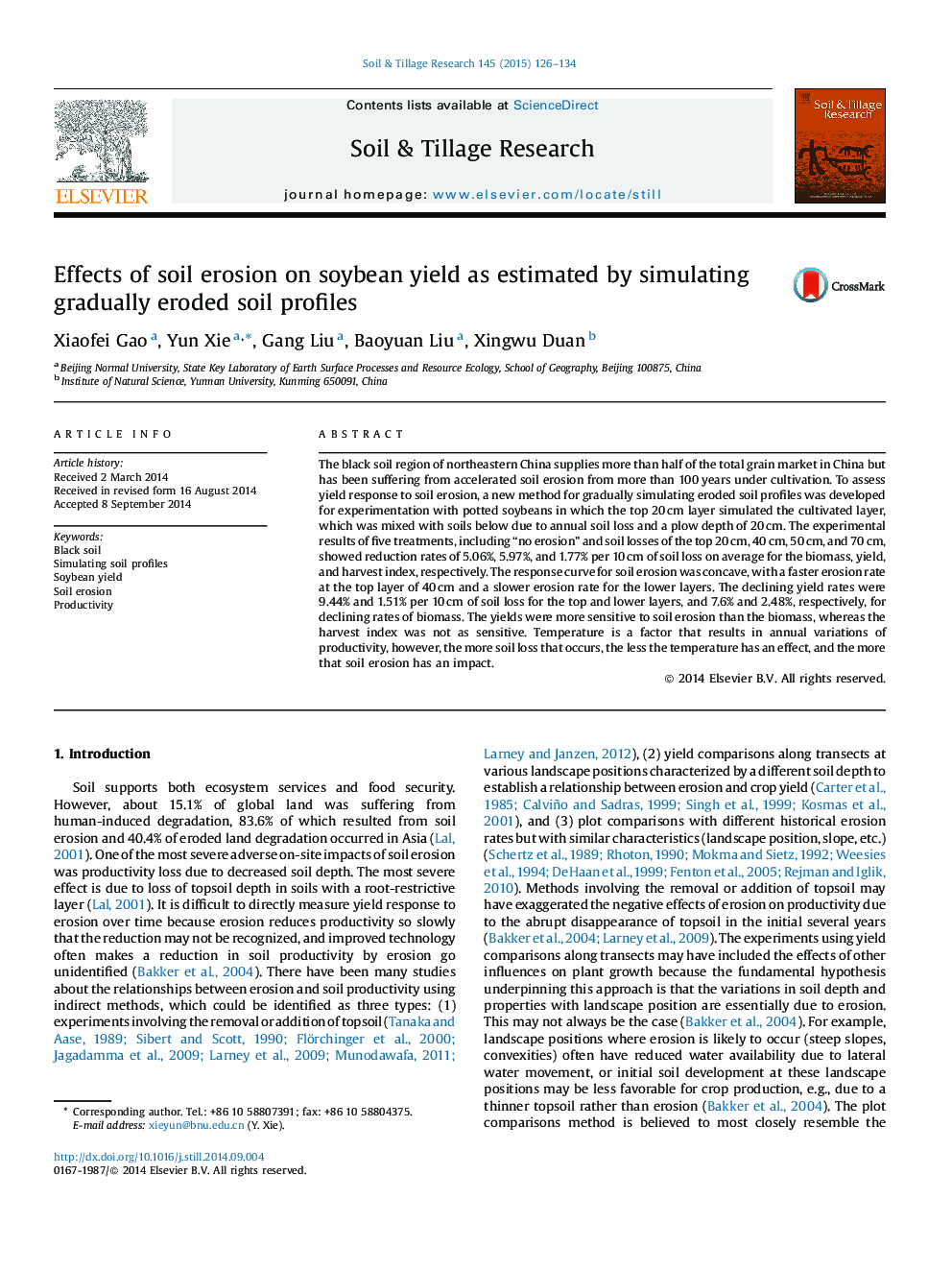| Article ID | Journal | Published Year | Pages | File Type |
|---|---|---|---|---|
| 305647 | Soil and Tillage Research | 2015 | 9 Pages |
•A new method of simulating gradually eroded soil profiles was suggested.•The average reduction rates of biomass and yield by soil loss were conducted.•The response curves of biomass and yield to soil erosion were actually concave.•7 years experiments showed annual variations of yields response to soil loss.
The black soil region of northeastern China supplies more than half of the total grain market in China but has been suffering from accelerated soil erosion from more than 100 years under cultivation. To assess yield response to soil erosion, a new method for gradually simulating eroded soil profiles was developed for experimentation with potted soybeans in which the top 20 cm layer simulated the cultivated layer, which was mixed with soils below due to annual soil loss and a plow depth of 20 cm. The experimental results of five treatments, including “no erosion” and soil losses of the top 20 cm, 40 cm, 50 cm, and 70 cm, showed reduction rates of 5.06%, 5.97%, and 1.77% per 10 cm of soil loss on average for the biomass, yield, and harvest index, respectively. The response curve for soil erosion was concave, with a faster erosion rate at the top layer of 40 cm and a slower erosion rate for the lower layers. The declining yield rates were 9.44% and 1.51% per 10 cm of soil loss for the top and lower layers, and 7.6% and 2.48%, respectively, for declining rates of biomass. The yields were more sensitive to soil erosion than the biomass, whereas the harvest index was not as sensitive. Temperature is a factor that results in annual variations of productivity, however, the more soil loss that occurs, the less the temperature has an effect, and the more that soil erosion has an impact.
